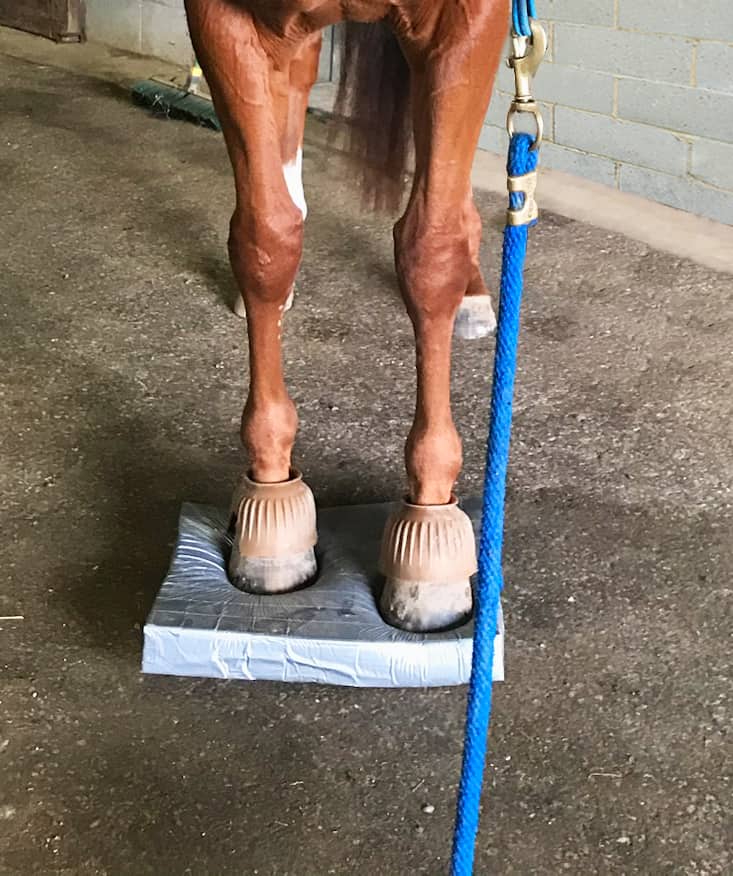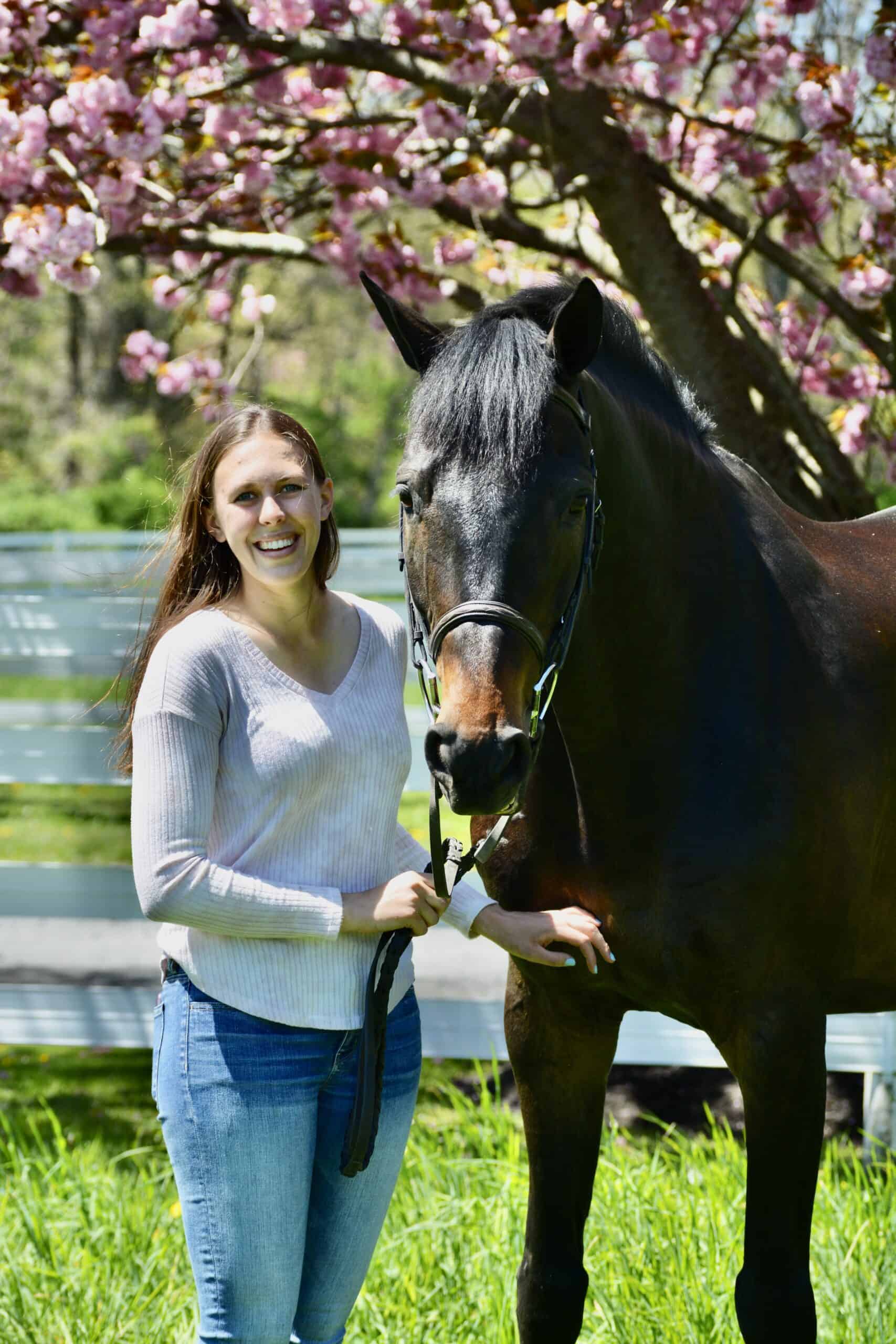Rehabilitating the Neurologic Horse

Rehabilitating a horse with neurologic clinical signs can take months and even years, depending on the severity of the underlying disease. “The goals of rehabilitation are to stimulate proprioceptive pathways (control the sense of self-movement, force, and body position), reestablish neuromotor control, and promote strength,” said Katie Ellis, DVM, MS, Dipl. ACVSMR, certified equine chiropractic and acupuncture, clinical assistant professor at the University of Georgia’s College of Veterinary Medicine, in Athens, during her presentation at the inaugural American College of Veterinary Sports Medicine and Rehabilitation Symposium, held April 27-29 in Charleston, South Carolina.
Physiotherapy is one of the first rehabilitation techniques to employ when working with a neurologic horse. Techniques include wither and tail pulls, picking up the limbs, core strengthening exercises, and weight shifting, where one handler gently pushes against the horse’s shoulder or hip to shift his weight to the opposite limb, said Ellis.
Veterinarians can incorporate proprioceptive balance pads into the horse’s rehabilitation program with caution. “The horse must be stable on flat ground and able to pick up all four feet before adding the balance pads,” said Ellis. “The horse should start with firm pads and only the front or hind feet on pads, before moving to softer pads or placing all four feet on at the same time.” Horses can fatigue very quickly with this exercise, so it is important to increase the difficulty very slowly based on their individual needs and a veterinarian’s recommendations for that horse.
If the horse is stable walking in a straight line, handlers can incorporate walking in a serpentine with surface changes into the rehabilitation plan. One of the best ways to do this is to walk the horse down a driveway with grass on either side and serpentine on and off each surface, said Ellis.
Elastic therapeutic taping, often over the horse’s hindquarters, can help stimulate proprioception and activate muscles.
Neuromuscular stimulation utilizes low level electrical current to allow contraction of specific muscle groups. “Neuromuscular stimulation is considered for horses with neurogenic muscle atrophy but should be used in small increments because muscles will fatigue very quickly,” said Ellis.
Once veterinarians have treated the primary cause of neurologic clinical signs, owners can implement these simple exercises and tools, said Ellis. Although recovery is often slow, many horses become pasture sound and some are even able to be ridden again in some capacity.

Written by:
Haylie Kerstetter
Related Articles
Stay on top of the most recent Horse Health news with















